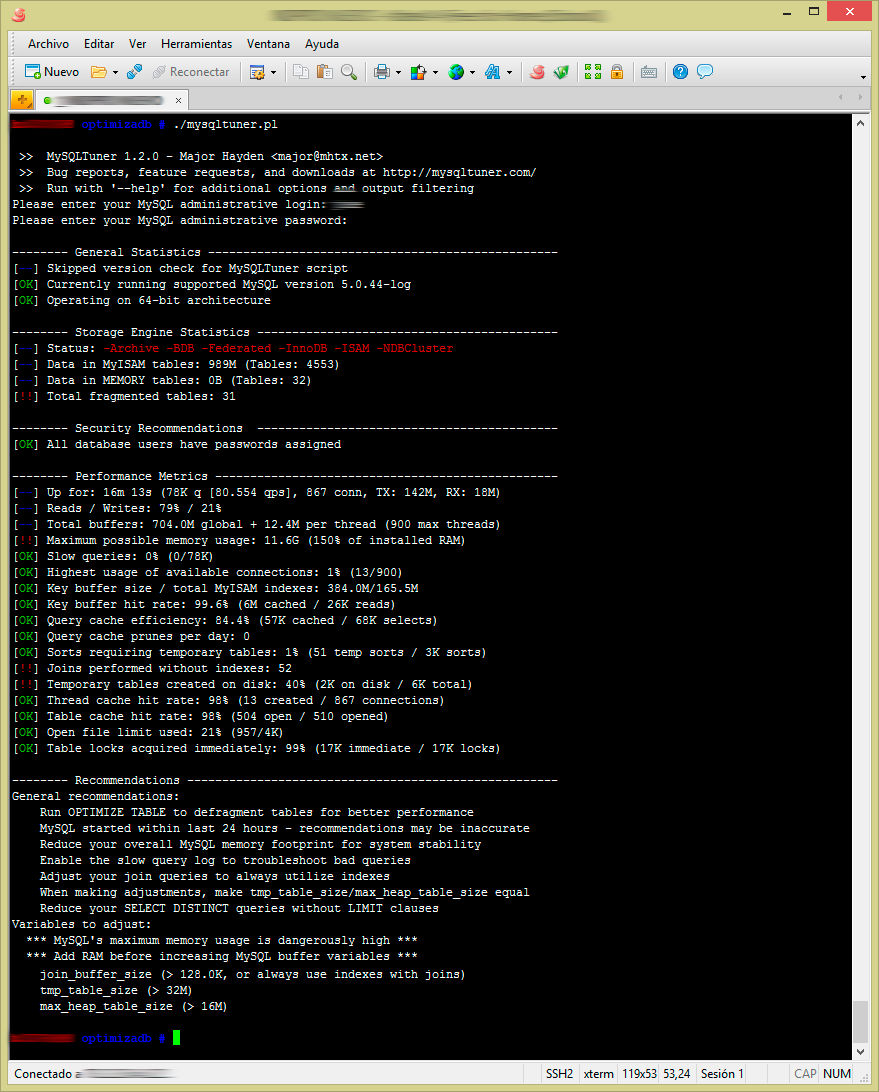

Highest usage of available connections: 81% (81/100) Maximum possible memory usage: 15.3G ( 48% of installed RAM) Do not ignore this as it can degrade performance significantly.Īpart from above, always keep an eye on following lines in Performance Metrics section of mysqltuner report: Total buffers: 2.6G global + 130.6M per thread (100 max threads)

Otherwise try to delete unwanted database. If you do not have enough RAM consider buying some. Ideally, it should be large enough to accomodate your all innodb databases. If it asks you to increase innodb_buffer_pool_size, make it large.If it asks you to tweak join_buffer_size, tweak in small chunks as it will be multiplied by value of max_connections.
MYSQL TUNER FREE
These are global values so feel free to increase them by large chunks (provided you have enough memory on server)
MYSQL TUNER INSTALL
If you are following our setup, you may already have mysqltuner installed. Otherwise run apt-get install mysqltuner on Ubuntu. Command: service mysql restart Using mysqltuner Mysqltuner will guide you further.ĭon’t forget to restart mysql. To start with, adjust following values: max_connections = 50 #default is 150 Its important because if you change something like join_buffer_size from 2M to 4M, it can shoot-up mysql’s max memory utilization by 300M memory (as per default 150 mysql’s max_connections value) Some values are global while some are per-thread values. You will see many settings & some config variables. Open /etc/mysql/my.cnf file & scroll down to section. We will use mysqltuner for tweaking mysql on a regular basis. Unlike PHP & Nginx tweaking, this is not a set & forget job! Tweaking MySQL is something you need to do regularly.


 0 kommentar(er)
0 kommentar(er)
